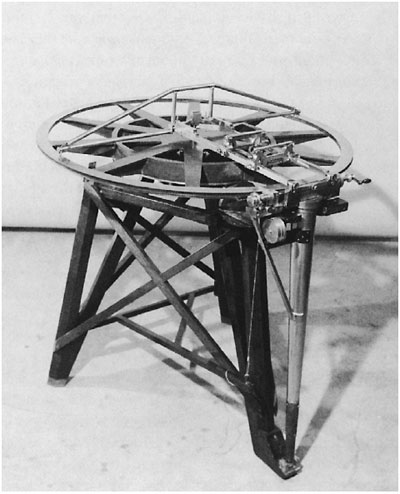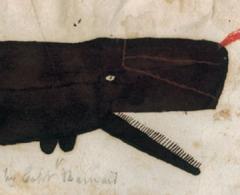
This Article From Issue
March-April 2009
Volume 97, Number 2
Page 170
DOI: 10.1511/2009.77.170
TOOLS OF AMERICAN MATHEMATICS TEACHING, 1800–2000. Peggy Aldrich Kidwell, Amy Ackerberg-Hastings and David Lindsay Roberts. xviii + 418 pp. Johns Hopkins University Press, 2008. $70.
Mathematics has always been associated with teaching—the word comes from the Greek μαθημα (máthema), meaning learning, study or science. In institutions ranging from scribal schools in the ancient world to elementary schools across the modern world, teachers have tried to pass on both a collection of basic skills and the elaborate theory surrounding them.
Their students, it seems, have always found the subject difficult. To make it more accessible, teachers have deployed many concrete objects. Some of these, such as textbooks and blackboards, are so commonplace today as to be almost invisible. Others, such as slide rules and “cube root blocks,” are gone from today’s classrooms and have an air of exoticism about them. And some, such as the calculator, are relatively new and still controversial.

From Tools of American Mathematics Teaching, 1800–2000..
Tools of American Mathematics Teaching, 1800–2000, by Peggy Aldrich Kidwell, Amy Ackerberg-Hastings and David Lindsay Roberts, is a historical survey of several of the objects that have formed, at some point during the past 200 years, the “material culture” of the American mathematics classroom. Each chapter is an essay focusing on one particular kind of object. Some treat things that are in general use, such as textbooks, blackboards and overhead projectors. Others study objects that are found almost exclusively in the mathematics classroom: protractors, blocks, beads, geometric models, slide rules, graph paper and the like. The four final essays focus on electronic technology.
In every case, we get both a close analysis of the objects themselves and a discussion of the available texts describing (and often promoting) their use. There are many photographs, mostly from the mathematics collections curated by Kidwell at the National Museum of American History. Unfortunately, there is little record of how, or even whether, the objects in question were actually used in classrooms. As the authors remark, most of the children involved were too young at the time to have reliable memories of what their classrooms were like, and very few teachers have left us accounts of what they did and whether it worked.
The focus is strictly on mathematics education in the United States, from elementary schools to universities. Developments in other countries are mentioned only to the extent that they influenced American educators. The authors assume some background knowledge about the history of education in the United States.
Because the essays are mostly independent of one another (the last four being an exception to this), the book is an excellent reference work. One can dip into it to read about slide rules, say, without needing to look at any of the other chapters. The authors do not attempt grand conclusions, nor do they tell an overall story.
Some themes, of course, do emerge. One major conclusion is that every new gadget has an enthusiast all its own. It is a little astonishing to see such a great mathematician as E. H. Moore, writing in the School Review in 1906, announce that the use of graph paper was going to revolutionize mathematics education by allowing the function concept to be appropriately dominant. Similarly, John Holt wrote in 1964 that “the beauty of the Cuisenaire rods is not only that they enable the child to discover, by himself, how to carry out certain operations, but also that they enable him to satisfy himself that these operations really work, really describe what happens.” Needless to say, graph paper had no such impact, and I have yet to hear of any child who reinvented arithmetic using Cuisenaire rods. And of course, any child who felt the need to verify that arithmetic actually works would be a mathematical prodigy for that reason alone.
Many of the pedagogical pronouncements recorded here have an air of unreality. They seem to be based on a dreamy idealism about children and how they learn, an idealism based more on romantic notions about childhood than on any sort of actual research or observation. So we read that early kindergartens had tables with a pattern of squares on them, either marked by lines or in a checkerboard pattern, in order to allow the children “to set their blocks down with perfect accuracy.” Or, in the chapter on the protractor and its use, we learn that after using drawing tools for a while, children would naturally want to put away such tools and learn deductive geometry. Similarly, in an advertisement for an early mathematical software package, we read that teachers need not worry, because it did not “provide a solution’s derivation, only the final answer.”
One gets the feeling that these people had never actually seen a five-year-old playing with blocks, had never considered that for most students a “final answer” is the crucial thing, and that the very fact that it can be obtained without a derivation lessens the importance of derivations. It is not surprising, then, that many of these accounts include remarks to the effect that the tools under discussion were little used or that their effectiveness was dubious. In fact, one sees over and over the standard scenario: Innovations work well when the teacher is enthusiastic about them but make little difference when they go into general use.
The chapters on electronic technology are perhaps the most immediately relevant to the questions that teachers today might have. In the context of the book as a whole, today’s arguments about calculators and computers appear to be just more of the same: Enthusiasts fall deeply in love with a new tool whose actual use may or may not produce the expected results. The initial uses devised for computers merely reproduce what was done before—the calculator replacing the slide rule, the geometry program replacing drawing tools such as protractors and compasses. Will computers and calculators become ubiquitous like the blackboard, or go the way of the slide rule? Clearly the ubiquity will come to pass, or so it seems right now. Perhaps it is time to stop arguing about whether to use such technology and to start thinking about how.
Perhaps the most interesting story here is the account of the model-making of Richard P. Baker. Well-trained in mathematics despite never finishing his doctorate, Baker was teaching high school mathematics when he read a research article titled “On the Quintic Scroll of Three Double Conics,” which described, in entirely algebraic terms, an interesting mathematical surface. Baker made a physical model of the surface and eventually sold it to the author of the article. So began an amazing career; by the end of his life Baker had a catalog with hundreds of geometric models. But only a fraction were ever actually made and sold, and Baker’s model-making business remained a one-man shop. His passion seems to have been working out how to make the models; the business was clearly a labor of love.
So is this book. The authors are fascinated by these objects. They have done well to call our attention to them. This book will be a crucial reference for anyone trying to understand the history of mathematics education in America.
Fernando Q. Gouvêa is Carter Professor of Mathematics at Colby College in Waterville, Maine. Among other things, he is the author, with William P. Berlinghoff, of Math through the Ages: A Gentle History for Teachers and Others, expanded edition (Mathematical Association of American, 2004).

American Scientist Comments and Discussion
To discuss our articles or comment on them, please share them and tag American Scientist on social media platforms. Here are links to our profiles on Twitter, Facebook, and LinkedIn.
If we re-share your post, we will moderate comments/discussion following our comments policy.